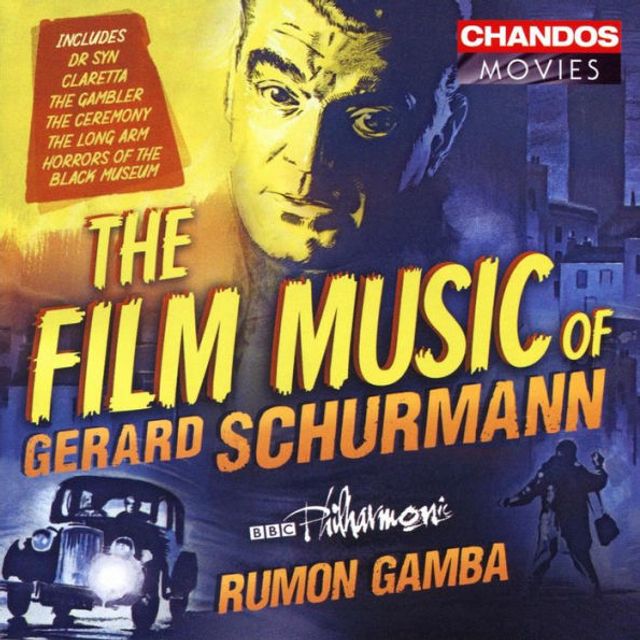Home
Jerry Goldsmith: 40 Years of Film Music
Loading Inventory...
Barnes and Noble
Jerry Goldsmith: 40 Years of Film Music
Current price: $43.99


Barnes and Noble
Jerry Goldsmith: 40 Years of Film Music
Current price: $43.99
Loading Inventory...
Size: OS
*Product Information may vary - to confirm product availability, pricing, and additional information please contact Barnes and Noble
This 57-track, four-CD set running nearly four-and-three-quarters hours and containing re-recordings of music composed by
Jerry Goldsmith
(1929-2004) for film and television scores over a period of more than 40 years was compiled from previously released
Silva Screen
collections, notably the 1989 album
Goldsmith Conducts Goldsmith
by
the Philharmonia Orchestra
(originally on
Decca
but reissued by
in 2002) and the 1998 two-CD set
The Omen: The Essential Jerry Goldsmith Film Music Collection
the City of Prague Philharmonic Orchestra
. As such, it is not the ideal
Goldsmith
album, despite its length, because there are odd repetitions and omissions. For example,
's music for the TV series
The Waltons
is part of a medley of
"Television Themes"
performed by
, but it also gets its own separate track performed by
the Daniel Caine Orchestra
. Similarly, musical excerpts from the Oscar-nominated films
The Wind and the Lion
,
Poltergeist
, and
Papillon
are part of a medley of
"Motion Pictures"
, but there are also separate tracks for each score performed by
.
was nominated for 18 Academy Awards (he won only for
The Omen
), and it's a shame his nominated scores are not better represented:
The Boys from Brazil
Star Trek®: The Motion Picture
Under Fire
Basic Instinct
L.A. Confidential
all get tracks of their own; but
A Patch of Blue
The Sand Pebbles
Patton
Chinatown
are represented only in medleys; and
Freud
Planet of the Apes
Hoosiers
Mulan
are not heard at all. (For those keeping count, his 18th nomination was for the song
"Ave Satani"
from
.) But even if there is too much of some scores and none of others, this album does give a good sense of
as a composer. Running in roughly chronological order, it shows his versatility (sometimes derided as facelessness), which allowed him to adapt to changing musical trends from the early 1960s to the early 2001s.
could hold his own against the classically influenced writers who preceded him, but he also kept pace with the pop-influenced, synthesizer-savvy young composers coming up behind him, and that is made clear in this sprawling compilation. ~ William Ruhlmann
Jerry Goldsmith
(1929-2004) for film and television scores over a period of more than 40 years was compiled from previously released
Silva Screen
collections, notably the 1989 album
Goldsmith Conducts Goldsmith
by
the Philharmonia Orchestra
(originally on
Decca
but reissued by
in 2002) and the 1998 two-CD set
The Omen: The Essential Jerry Goldsmith Film Music Collection
the City of Prague Philharmonic Orchestra
. As such, it is not the ideal
Goldsmith
album, despite its length, because there are odd repetitions and omissions. For example,
's music for the TV series
The Waltons
is part of a medley of
"Television Themes"
performed by
, but it also gets its own separate track performed by
the Daniel Caine Orchestra
. Similarly, musical excerpts from the Oscar-nominated films
The Wind and the Lion
,
Poltergeist
, and
Papillon
are part of a medley of
"Motion Pictures"
, but there are also separate tracks for each score performed by
.
was nominated for 18 Academy Awards (he won only for
The Omen
), and it's a shame his nominated scores are not better represented:
The Boys from Brazil
Star Trek®: The Motion Picture
Under Fire
Basic Instinct
L.A. Confidential
all get tracks of their own; but
A Patch of Blue
The Sand Pebbles
Patton
Chinatown
are represented only in medleys; and
Freud
Planet of the Apes
Hoosiers
Mulan
are not heard at all. (For those keeping count, his 18th nomination was for the song
"Ave Satani"
from
.) But even if there is too much of some scores and none of others, this album does give a good sense of
as a composer. Running in roughly chronological order, it shows his versatility (sometimes derided as facelessness), which allowed him to adapt to changing musical trends from the early 1960s to the early 2001s.
could hold his own against the classically influenced writers who preceded him, but he also kept pace with the pop-influenced, synthesizer-savvy young composers coming up behind him, and that is made clear in this sprawling compilation. ~ William Ruhlmann


















